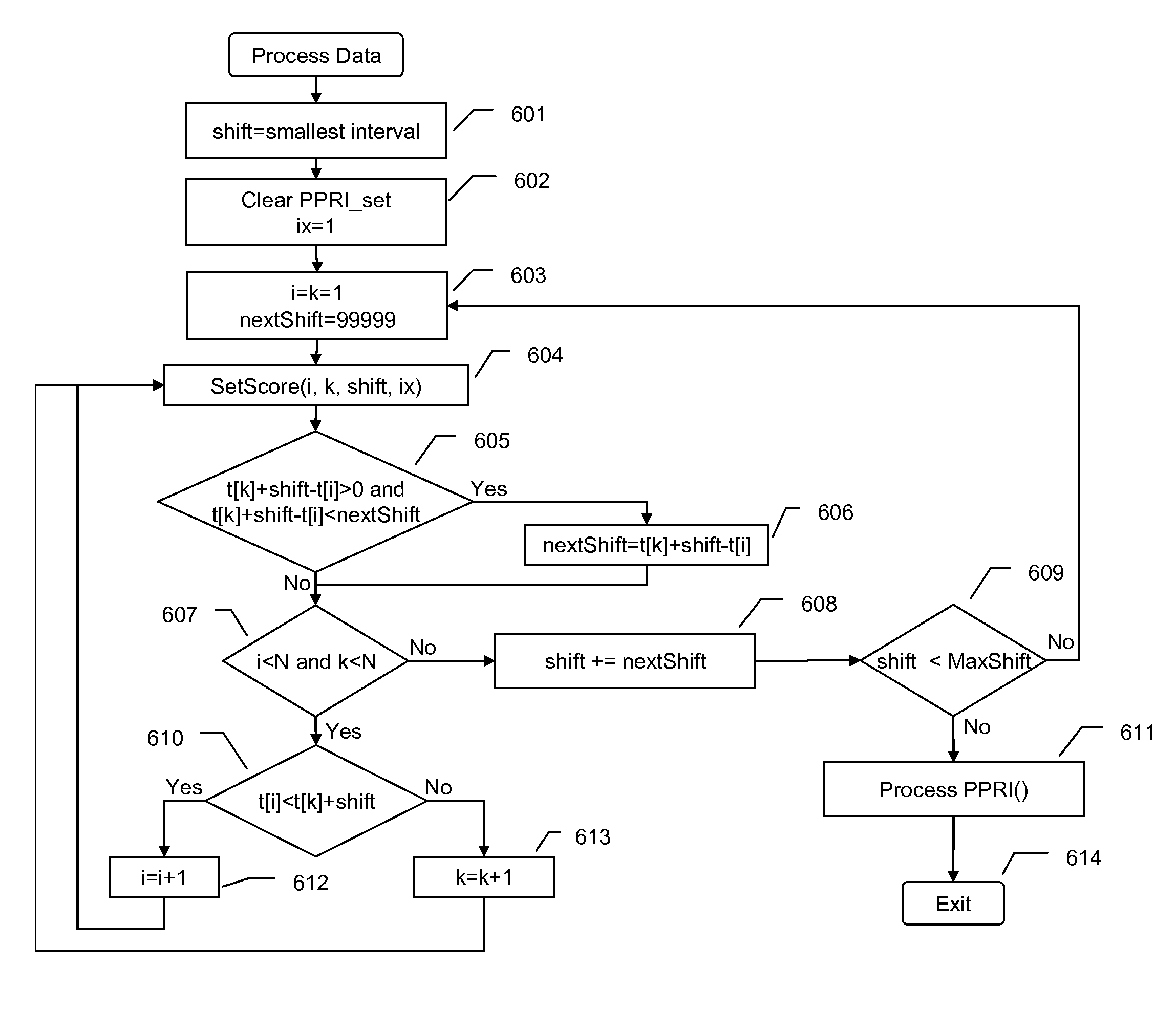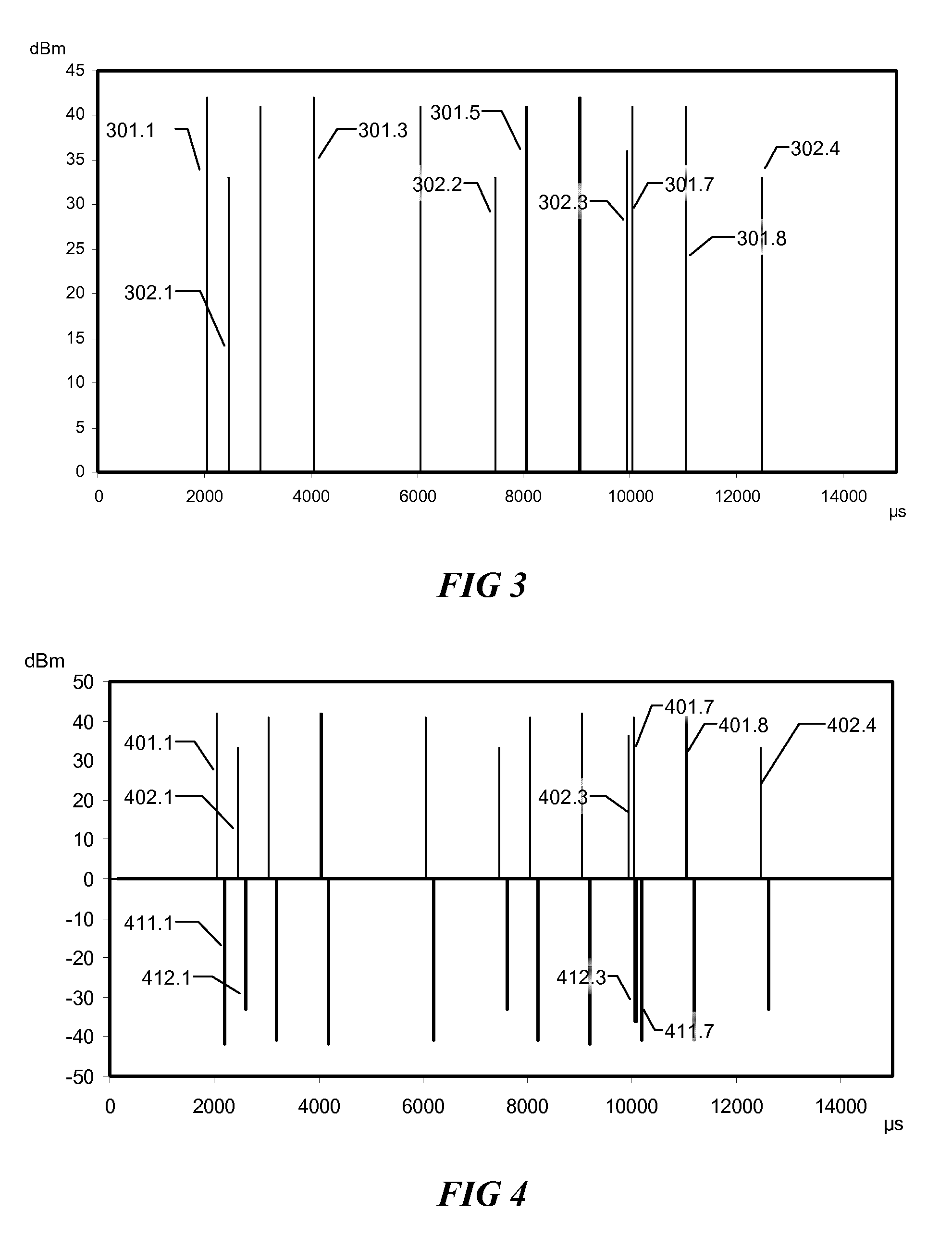Method for detecting radar signals affected by interference
- Summary
- Abstract
- Description
- Claims
- Application Information
AI Technical Summary
Benefits of technology
Problems solved by technology
Method used
Image
Examples
Embodiment Construction
[0055]For better understanding the method, we should look first at signals reported by hardware, as those reports are the only source of data available to this method.
[0056]Radar installations transmit pulses continuously. The transmitted radar pulses are characterized (for the needs of this method) by Pulse Repetition Interval (PRI) or the reverse of it, Pulse Repetition Frequency (PRF), pulse power and pulse duration. Because the radar antenna rotates continuously and has a very good directivity, a U-NII device receives from radar installation pulses only when radar antenna is directed towards the U-NII receiver. When radar antenna is oriented in a different direction, the U-NII device does not receive enough energy from radar installation for reporting any pulse. The set of pulses received when the antenna is oriented towards the U-NII device is called a radar burst and the number of pulses in a burst depends on antenna rotation speed, antenna directivity and the PRI of the trans...
PUM
 Login to View More
Login to View More Abstract
Description
Claims
Application Information
 Login to View More
Login to View More - Generate Ideas
- Intellectual Property
- Life Sciences
- Materials
- Tech Scout
- Unparalleled Data Quality
- Higher Quality Content
- 60% Fewer Hallucinations
Browse by: Latest US Patents, China's latest patents, Technical Efficacy Thesaurus, Application Domain, Technology Topic, Popular Technical Reports.
© 2025 PatSnap. All rights reserved.Legal|Privacy policy|Modern Slavery Act Transparency Statement|Sitemap|About US| Contact US: help@patsnap.com



